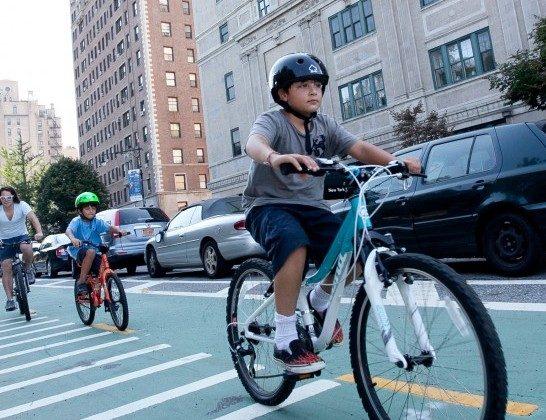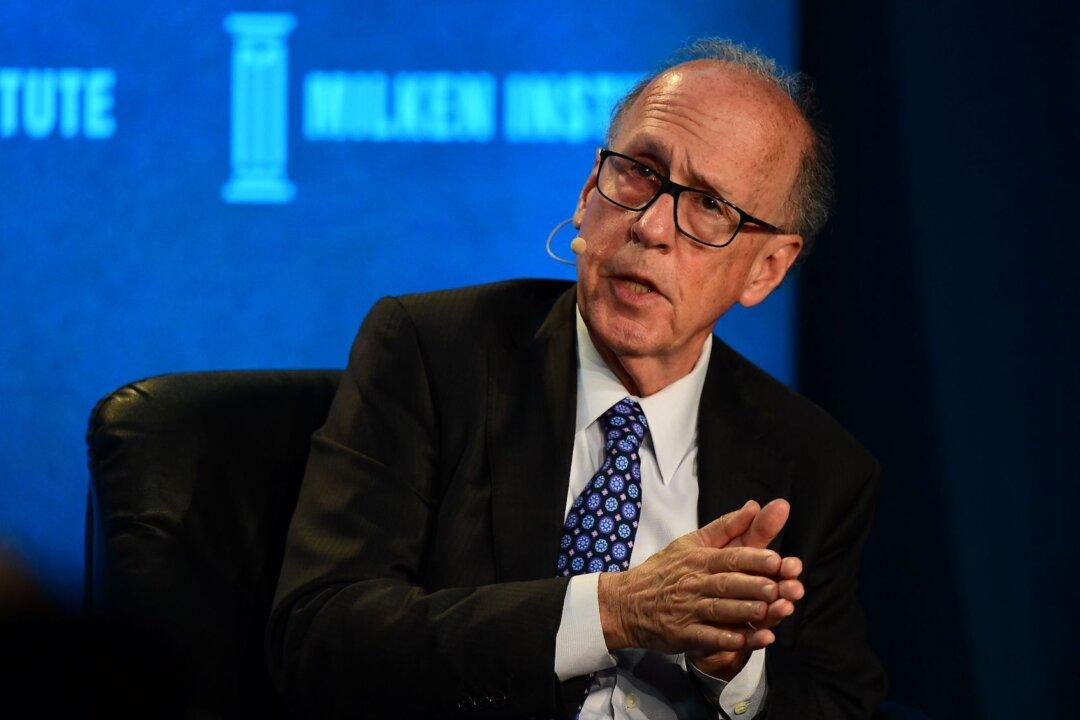NEW YORK—New traffic safety initiatives taken on by the Department of Transportation (DOT) seem to be working. According to preliminary statistics released on Thursday, the city will record the lowest number of annual traffic fatalities since 1910.
As of Tuesday, there were 237 fatalities in the city this year, down 40 percent compared to 2001. Of these, 134 were pedestrian fatalities resulting from collisions with vehicles, which are at an all-time low. The fatality rate for cyclists has also decreased; while bike ridership has quadrupled in the last decade, cyclist fatality numbers have remained roughly the same.
“We’ve made progress in every area of traffic safety due to our willingness to take new, creative approaches to long-standing challenges with safety redesigns and through aggressive traffic enforcement,” said Mayor Michael Bloomberg at a press conference held at the Grand Army Plaza. “We’ve focused on making our streets safer for all who use them—no matter how they decide to travel—and it’s another reason New Yorkers are living longer and another reason our city is safer than ever before.”
The mayor attributed the city’s low traffic fatality rates to the efforts of the DOT and New York Police Department.
“NYPD traffic enforcement is aimed at saving lives, and that’s reflected in the million summonses we issue for moving violations annually,” said Police Commissioner Raymond Kelly at the conference. “About a third of the summonses are related to seat belt enforcement and distracted driving, both life-and-death concerns. It’s also reflected in arrests for DWI [driving while intoxicated]. We’ve made 8,500 drunk driving arrests through Dec. 18 and seized 900 vehicles in the process.”
The Grand Army Plaza was used as an example to demonstrate the DOT’s accomplishments in creating a safer traffic environment. Prior to the completion of its redesigning in October, the plaza had been a hazardous area and described as an “11-acre vicious circle of traffic” by DOT Commissioner Janette Sadik-Khan. Now, it has additional pedestrian islands, crosswalks, and a new traffic signal that clearly separates pedestrian areas from the roadbed. The safety redesigning was voted by the people as the winner of “Best Pedestrian Project” in the 2011 Streetsies Awards.
The department has also implemented various other traffic-calming projects, street redesigns, and safety upgrades in all five boroughs, including the first neighborhood slow zone in the Bronx, where the speed limit is at 20 miles per hour. The slow zone implemented in the Bronx was likely inspired by the German capital, Berlin, where over 70 percent of the country’s road network is designated to 20-miles per hour zones.
Other efforts include the installation of pedestrian countdown at 1,100 intersections and the launch of engineering, education, and outreach campaigns about traffic safety.
New York has the lowest traffic fatality rate among all U.S. cities with over one million in population. It is currently at 2.8 fatalities per 100,000 residents. However, the city lags behind Berlin, which has only 1.6 fatalities per 100,000 residents.
Traffic accidents cost the city and its residents about $4.29 billion every year, according to the DOT.
Bike Lanes
One major project that the DOT has undertaken is the increase of bike lanes. Most residents in the city are supportive of the department’s efforts. According to a survey by Quinnipiac University, 59 percent of New Yorkers support the expansion of the biking network.
Not all New Yorkers were enthusiastic about additional bike lanes, however. Earlier in March, a group of people filed a lawsuit against the DOT to remove a bike lane added along Prospect Park West. Opponents of bike lanes are often local businesses who say they have no room to park their delivery trucks, customers who say they can’t park their cars, and pedestrians who think it’s unsafe. The case was eventually dropped, because it was filed after the statute of limitations had expired.
Urban policy analyst John Petro believes that bike lanes have contributed to the lowered traffic fatality rate.
“I really want to point to the fact that ’safe streets’ treatments like bike lanes have absolutely proven to save lives,” said Petro in an interview with The Epoch Times. “Let’s just realize that what the DOT is doing is working. Traffic isn’t going any slower; traffic is always going to be a problem in Manhattan, but what we’re doing is providing people with alternatives, and we’re making it safer for people to get around by bicycle and by walking.”
The city will have difficulty balancing its traffic system if the bike system is not expanded, according to a report called “Vision Zero” that Petro co-wrote, released in July, which focused on the city’s street safety. If New Yorkers do not turn to alternatives such as walking, biking, or taking public transit, “rush hour could last up to 12 hours each day by 2030,” states the report.
With the new safety procedures established by the DOT, New York is on its way to reducing traffic fatalities by half within 20 years, Petro said.
“It really is about changing the way our streets are designed and changing the behavior of New Yorkers, so that they’re more aware about the scope of the problems [related to] traffic deaths,” he added.








